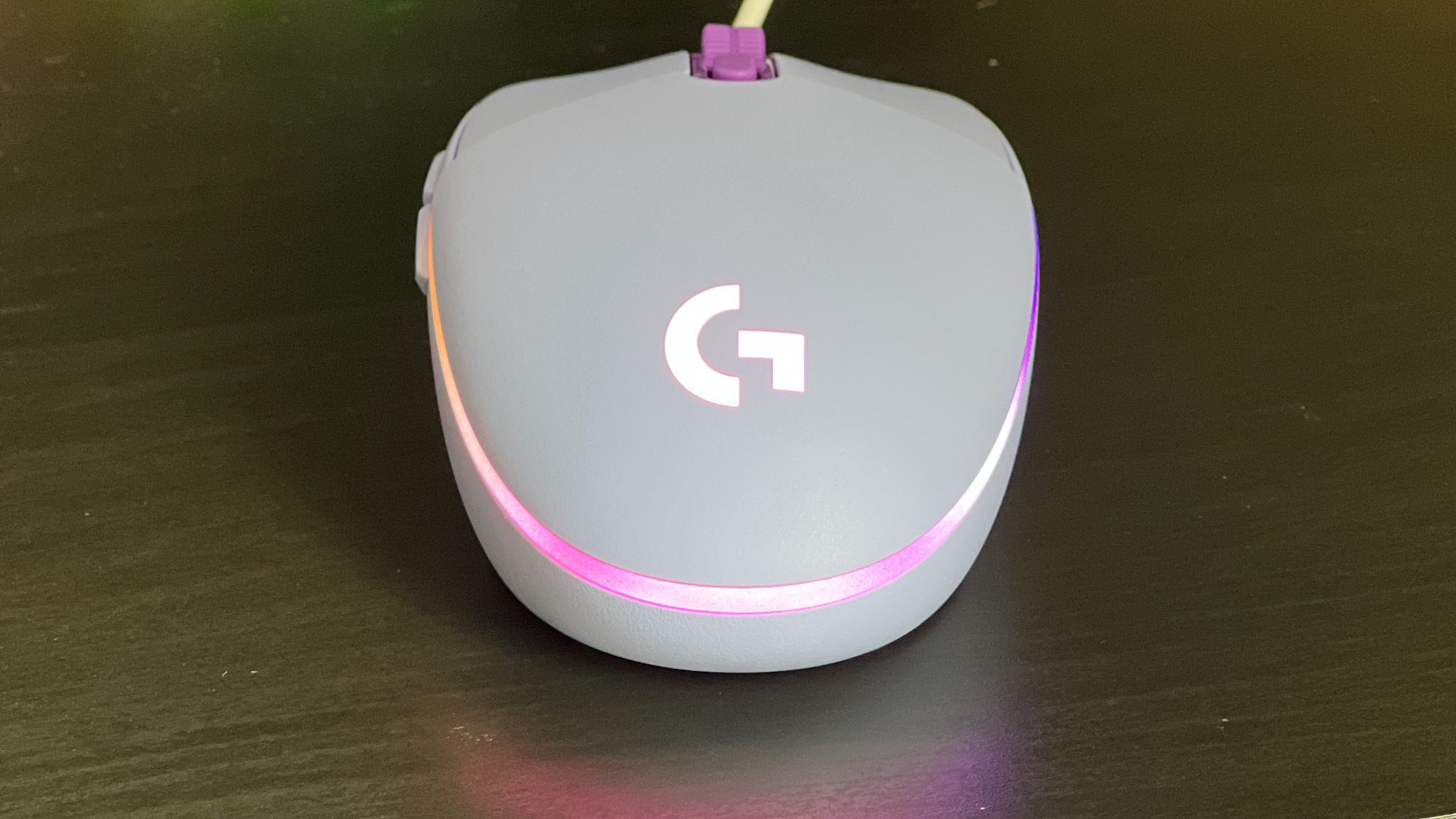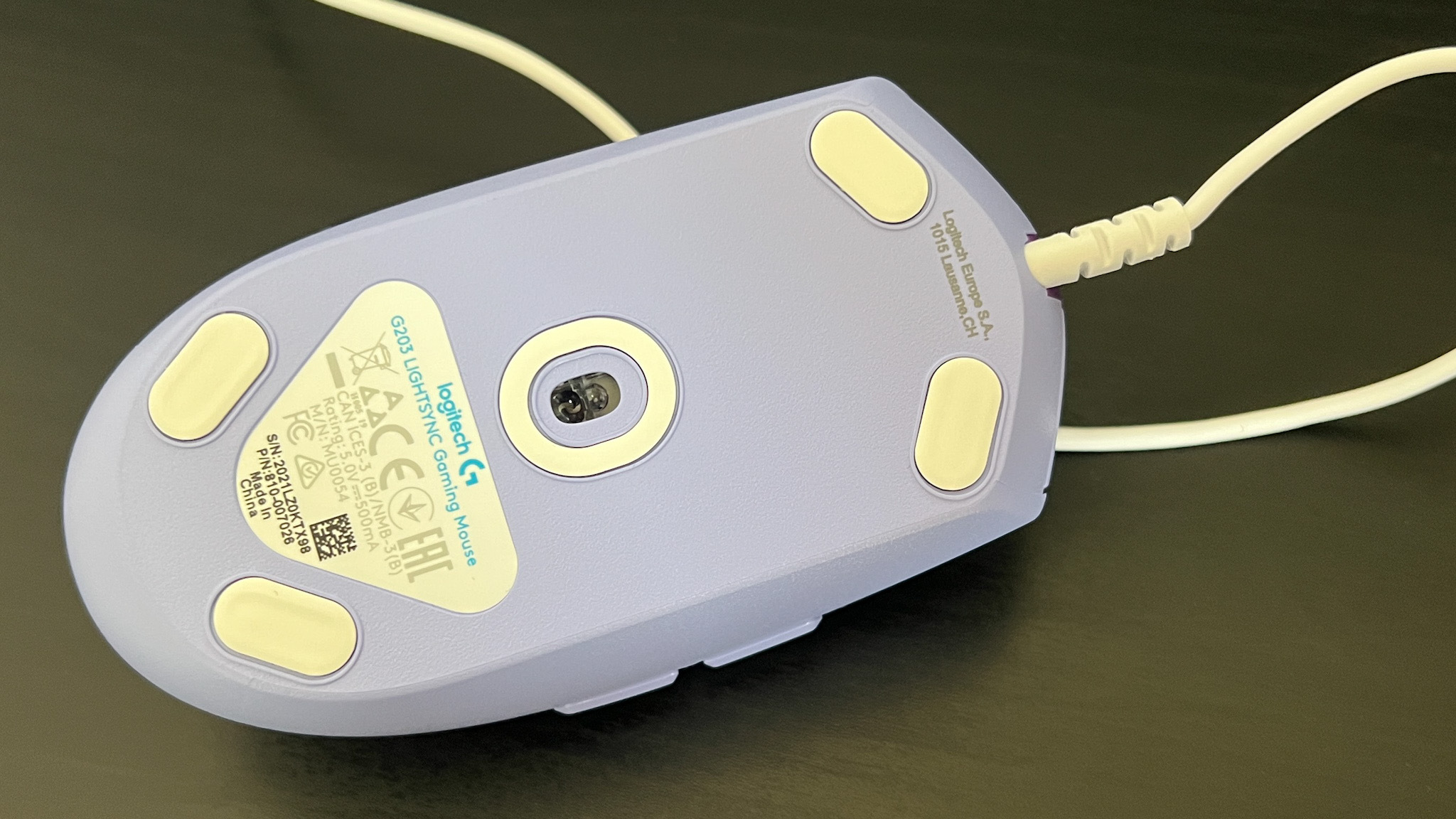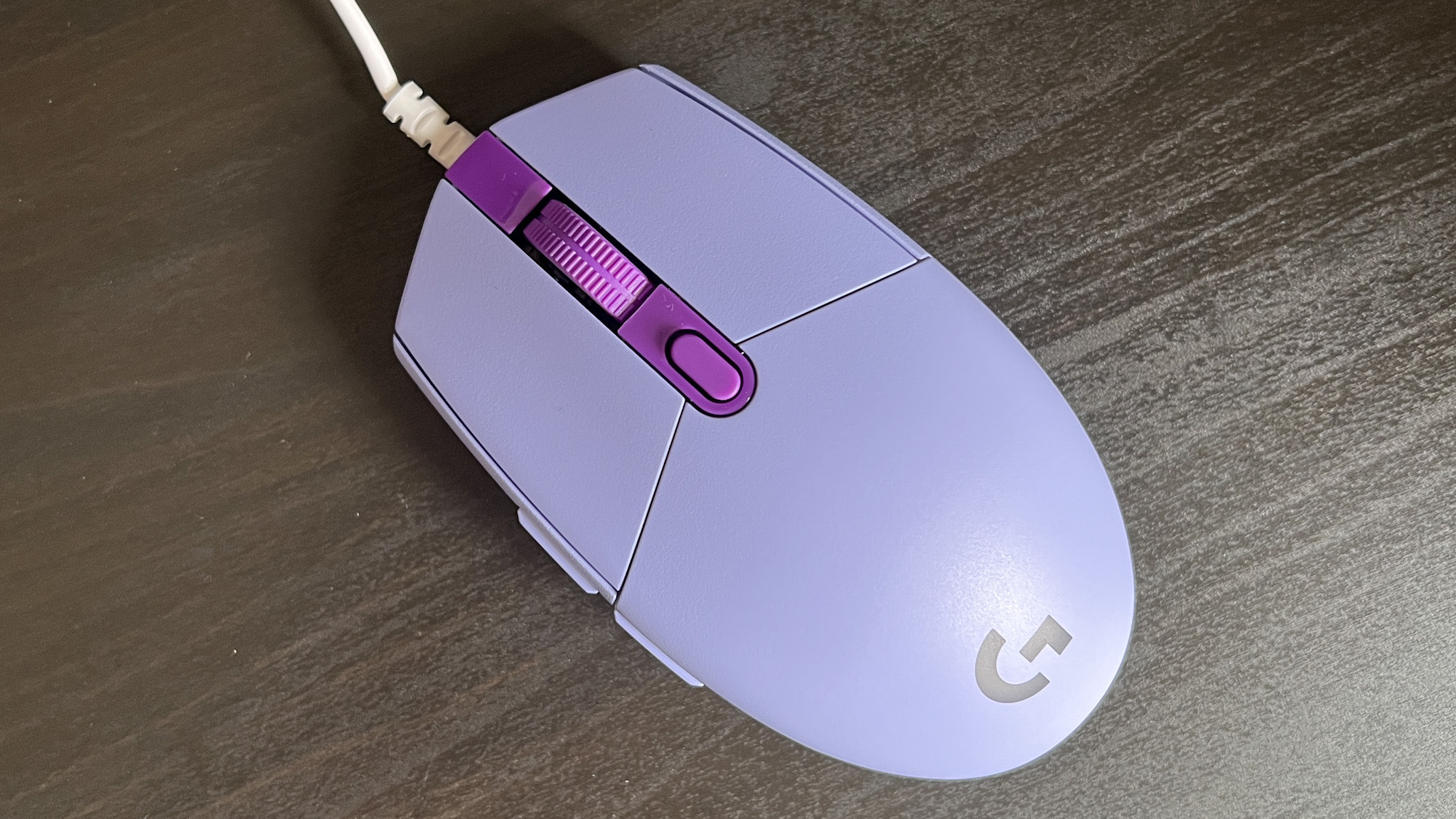GamesRadar+ Verdict
The Logitech G203 Lightsync is a go-to for anyone after an affordable gaming mouse that can also keep up with office work and productivity. Its feature set and performance far outweigh its price point, delivering solid value for money and covering all your bases for everyday play.
Pros
- +
Solid feature set for the price
- +
Comfortable shape and design
- +
Excellent price to performance balance
Cons
- -
Smaller shape might not fit larger hands
Why you can trust GamesRadar+
Rocking up at just $39.99 / £34.99 (but often on sale for far less), the Logitech G203 Lightsync is every basic setup's dream. It's affordable but looks and plays great under the hand. It's basic, but with two side buttons, a solid sensor, and a DPI clicker you're getting everything you need for everyday play, without the premiums of fancy features. Just because it's cheap doesn't mean it can't sit among the best gaming mouse models on the market, and it's the value for money on offer here that pushes the Logitech G203 Lightsync to those heady heights.
I put the Logitech G203 Lightsync (in pastel purple) to the test across work and play, to see just how far you can really get with a sub-$50 / £50 gaming mouse.
Design

There's no doubt about it, this is a mouse designed for smaller hands. Measuring in at 4.59 x 2.45 x 1.50 inches, those on the hunt for something to cling onto might not find the right fit here. Nevertheless, that miniature form factor means the Logitech G203 Lightsync manages to stay fairly lightweight, at 85g. I practice, I was flinging this device around with as much ease as I was the slightly more expensive Corsair Sabre RGB Pro, which weighs in at 74g but comes with a chunkier build. The squat nature of this frame means the G203 Lightsync is best used with a claw or fingertip grip, though my smaller hands were also able to comfortably sit in a palm grip as well.
There's a wide variety of different colorway options coating that shell as well. I was sent a violet model outfitted with darker purple accents running along the scroll wheel and DPI button and - of course - the classic Lightsync strip running around the rear of the dome. You can also pick up the G203 Lightsync in black, white, or blue.
The build materials are, as one would expect, fairly simple. You're getting a plastic body with no additional grip materials, and a lightweight plastic scroll wheel up top. That plastic is fairly smooth, so there's no textured foothold to hang onto, but the coned shape leading towards the back does nestle into the palm just the right amount to provide a greater sensation of control.
Features
The Logitech G203 Lightsync isn't going to win any awards for a breakthrough spec sheet. However, considering this is such a cheap gaming mouse, there's still enough under the hood to keep you on your toes. The G203 maxes out at 8,000 DPI, with incremental shifts of 50DPI accessible through the dedicated button running below the scroll wheel. You're also picking up two macro buttons placed at a nice height above the thumb, and offering a satisfying, easy-to-hit click.
These are features that work just as well in the office as they do on the battlefield, making the Logitech G203 Lightsync an excellent all-round companion. Your money is best spent when you dive into the Logitech G Hub software, though.

This is where the value of springing for a gaming-focused device rather than an everyday pointer really shows its face. Here, you'll be able to assign macros to each of the six programmable buttons and configure the RGB to your liking. Sure, mice like the Logitech G502 Lightspeed and Razer Viper V2 Pro allow you to far further with your micro-adjustments, but for a $40 budget buy you're getting everything you need to get to gaming (and improve your productivity experience) here.
It's also worth noting that this is a wired device. If you're looking for a wireless gaming mouse, you'll need to head over to the Lightspeed range.
Performance
It's true, the Logitech G203 Lightsync isn't going to blow the likes of the Razer Basilisk V3 out of the water, but it doesn't need to. If you're not relying on a superlight, super-fast gaming mouse to see you through breakneck FPS tournaments, why pay for one? At $39.99, the Logitech G203 Lightsync only needs to offer a snappy response time in-game, hold its tracking position on the battlefield, and remain comfortable while doing so. In all my testing across Apex Legends, Rise of the Tomb Raider, and Red Dead Redemption 2, this little pointer did just that.

Sure, I couldn't quite get the camera to swing as wildly as it would with the Razer Viper V2 Pro under my fingertips, but I also wasn't wielding a $150 gaming mouse. At this price, the Logitech G203 Lightsync far exceeds expectations, thanks to the work of its (unnamed) sensor and relatively lightweight form factor.
I was even particularly impressed with the click switches under each of the main buttons. While I have been used to a softer landing in more speed-focused pointers, there was a satisfying, tactile snap to each of these clicks that I missed after months of trialling switches designed for twitch actuation. They made every headshot feel just that little bit more special, and every spreadsheet just that little bit less awful.
Should you buy the Logitech G203 Lightsync

For the money you're spending, there are very few gaming mice that can compete with the G203 Lightsync from a pure value standpoint. It really is one of the best bang for buck value mice on the market. You can easily find this mouse for less than $30 / £20 during sales events, and the fact that you're getting a responsive sensor, plenty of macro programmability, and long-lasting comfort for such a low price is certainly impressive. I'd recommend this device to anyone on the hunt for a budget gaming mouse that can also sit by their side in the office to boot.
If you'd prefer something with a more robust sensor (perhaps if you are taking some of those first steps into faster FPS gameplay), it might be worth checking out the Corsair Sabre RGB Pro at around $50 / £50. This device ups the ante to 18K DPI and also offers a longer body that may suit larger hands better.
Or, if you prefer a grip shape designed for ergonomics (the G203 Lightsync is comfortable, but a decidedly flat affair), I'd recommend investigating the Razer DeathAdder Essential for $29.99 / £29.99, though you are adding a little weight and dropping down to a max 6.4K sensor.
How we tested the Logitech G203 Lightsync
I used the Logitech G203 Lightsync for all work and play over the course of one week, comparing my experience against more expensive pointers like the Razer Viper V2 Pro and devices that fall within the same price bracket like the Corsair Sabre RGB Pro. I tested the performance and feature set on Apex Legends, Rise of the Tomb Raider, and Red Dead Redemption while also using the device in everyday play on Cities Skylines and Magic The Gathering: Arena.
For more inspiration, check out our guide to the best Razer mouse options on the market. Or, for more budget accessories, check out the best cheap gaming keyboards and cheap gaming headsets.

Managing Editor of Hardware at GamesRadar+, I originally landed in hardware at our sister site TechRadar before moving over to GamesRadar. In between, I've written for Tom’s Guide, Wireframe, The Indie Game Website and That Video Game Blog, covering everything from the PS5 launch to the Apple Pencil. Now, i'm focused on Nintendo Switch, gaming laptops (and the keyboards, headsets and mice that come with them), PS5, and trying to find the perfect projector.



